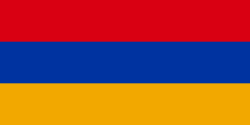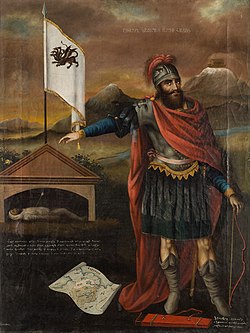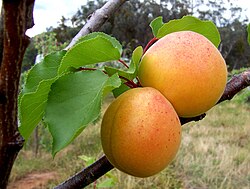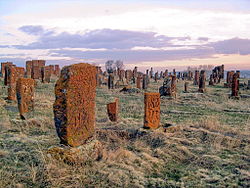| Image | Name | Category | Description |
|---|
| Hayk Nahapet | National founder | Considered the traditional founder of Armenia, to which he gave his namesake (Hayk/Hayastan) and occasionally considered as the ancestor to all Armenians. |
| Gregory the Illuminator | Patron saint | Founder and first official head of the Armenian Apostolic Church. |
| Mount Ararat | National mountain | Ararat is a sacred mountain for Armenians. Armenians believe that Noah's Ark landed on it and became the foundation of the Armenian nation. It is one of the most recognizable and iconic national symbols of Armenia. [3] |
| Duduk | National musical instrument | The duduk is an Armenian national instrument hailing out of the Kingdom of Urartu. The original name for this instrument is tsiranapokh, which roughly translates as an "apricot tube". Duduk's are made solely out of apricot wood, since it gives it a distinct sound. [3] |
| Apricot | National fruit | The academic name for apricot is "Prunus Armeniaca" due to the suspected Armenian origin, as Alexander the Great originally brought the fruit from Rome. The fruit plays an enormous role in Armenian culture and folklore. The Armenian national musical instrument, duduk, is made from apricot tree wood. [3] |
| Khachkars | Armenian cross stone | Cross-stones or khachkars is an ancient Armenian symbol unique to Armenian culture of the great architectural value. Khachkars are made on variety of occasions: victory in a war, death of a person, completion of construction of a temple or a bridge and et. cetera. Every khachkar differs from one another, so it is almost impossible to find an identical one. |
| Forget-me-not | National flower | Forget-me-not is a symbol of the commemoration of the Armenian genocide and appeared following its Centennial. The yellow part symbolizes the memorial of Tsitsernakaberd, and the purple colour denotes the recognition and the condemnation of the genocide. [4] |
| Arevakhach | Armenian cross | Roughly translating as "sun-cross", Arevakhach is an ancient Armenian symbol with its origins hailing from the Kura–Araxes culture. [4] |
| Armenian dram | National currency | The historical currency of Armenia. |
| Armenian Taraz | National dress | Traditional dress of Armenia |
















